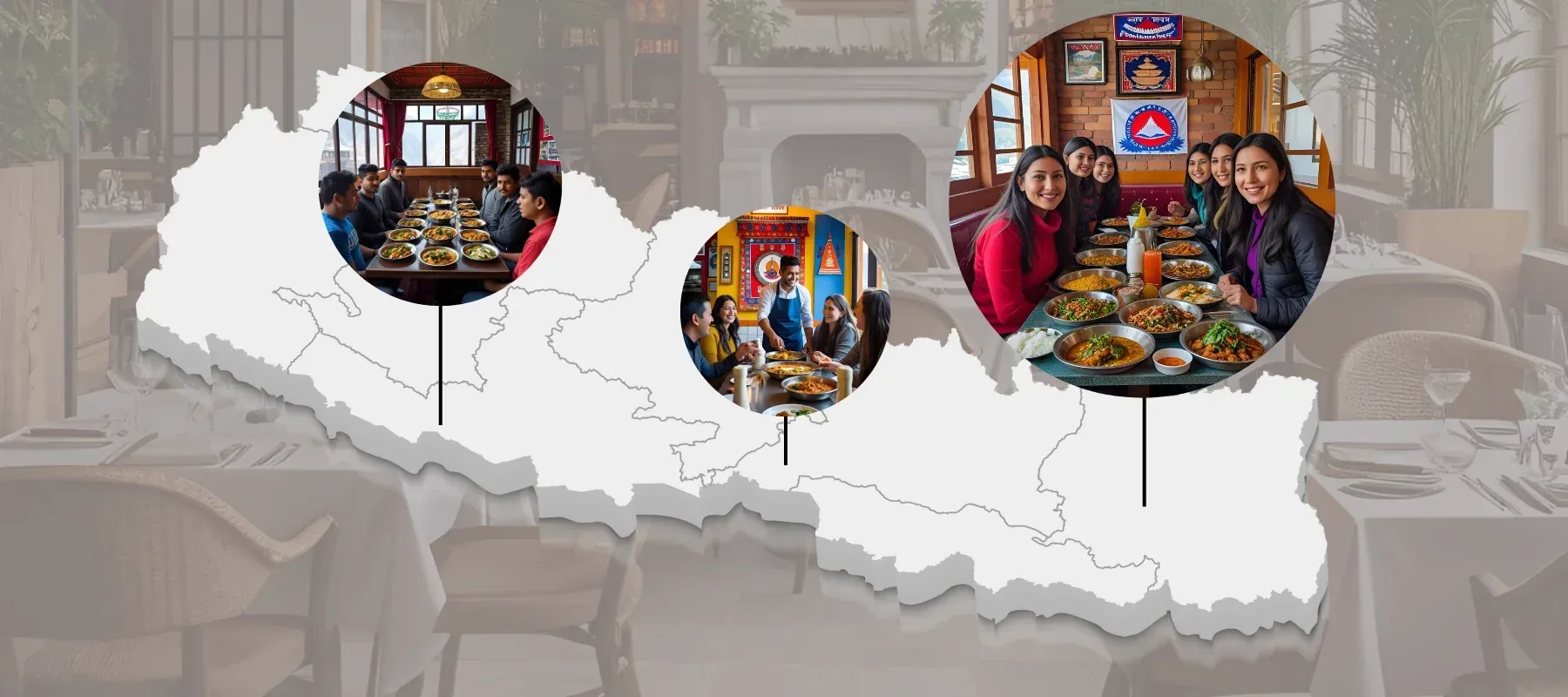Managing Multi-Branch Restaurants in Nepal: Challenges and Solutions

Managing
Multi-Branch Restaurants in Nepal: Challenges and Smart Solutions
Expanding a single restaurant into multiple branches is a dream many Nepali food entrepreneurs share. And why not? More branches mean more visibility, better brand recognition, and higher profits. But growth also brings complexity.
From managing staff across cities to keeping the customer experience consistent, multi-branch operations can become a daily balancing act. What worked in your original outlet doesn’t always work when you scale. Add the realities of Nepali infrastructure—like unreliable internet, varying local supply chains, and inconsistent staff training and things get even trickier.
In this blog, we’ll walk you through the
real-world challenges of managing multiple restaurants in Nepal and offer
practical, easy-to-implement solutions that can help you run your outlets more
efficiently.
The Excitement (and Reality) of Expansion
Let’s say you started a cozy little café in Kathmandu. It was a hit. Customers loved the ambiance, the coffee, the food—and the service. Business boomed. Friends, family, and even customers encouraged you to open a new branch in Lalitpur, then maybe in Pokhara, or even Butwal.
At first, things go well. But then the
challenges start creeping in:
-
Orders start getting delayed at your new branch
-
Inventory runs out unexpectedly
-
Customers complain about different pricing or
menu items
-
You can’t be everywhere at once to supervise
That’s when the reality of managing multiple
restaurants hits hard.
Key Challenges Faced by Multi-Branch Restaurants in Nepal
1. Operational Disconnect Between Branches
One of the most common issues in multi-branch
management is lack of centralized coordination. Each outlet ends up working
like its own mini-business, with different reporting formats, local supplier
deals, and even different levels of service quality.
Why it’s a problem:
Without a central system, you’re left managing through phone calls, WhatsApp
messages, and spreadsheet chaos. There’s no unified view of how your business
is actually performing.
2. Inconsistent Menu and Customer Experience
A customer who dines at your Thamel branch
might expect the same quality at your Lakeside Pokhara outlet. But without a
system to standardize things like menu items, pricing, promotions, and kitchen
processes, the customer experience varies greatly.
Why it
matters:
Inconsistent quality erodes brand trust. The same loyal customers who loved
your first outlet may never come back after a poor experience at another
branch.
3. Inventory Headaches
You can’t manage inventory with paper books
when you’re running five outlets in different cities. Stockouts, expired goods,
and pilferage become common when there's no centralized or real-time tracking
system in place.
Common
signs of this issue:
-
Over-ordering at one branch, understocking at
another
-
High food wastage
-
Surprise shortages during peak hours
-
No record of what was used, sold, or wasted
4. Cash Flow & Sales Monitoring
Difficulties
Collecting sales data manually from each
outlet at the end of the day is outdated—and risky. You’re relying on people to
send numbers that could be wrong, delayed, or even manipulated.
What you
lose:
-
Real-time insights
-
Daily revenue visibility
-
Ability to make data-driven decisions on
staffing, pricing, or supply chain
-
Accurate VAT/tax calculations
5. Communication & Training Gaps
Your staff is the face of your restaurant.
When you scale, your team grows—and that brings new challenges. Are they
following the same SOPs? Are new hires being trained the same way?
Result
of misalignment:
-
Slow service
-
Confused staff
-
Negative customer feedback
-
Frustration across teams
Smart Solutions to Overcome These
Challenges
Let’s now look at how you can tackle these
issues with simple but powerful solutions—especially tailored for restaurants
in Nepal.
1. Implement a Centralized Cloud POS System
A cloud-based POS (Point of Sale) system is a
must. It allows you to control everything from one place—whether you're in your
office or traveling.
With a
good POS system, you can:
-
See live sales updates from all branches
-
Make menu changes across outlets instantly
-
Track cash, card, and digital wallet payments
-
View best-selling items, staff activity, and
customer flow in real-time
Bonus
Tip: Choose a POS that works offline and syncs later—essential for
areas with poor internet.
2. Standardize Menu, Promotions & Pricing
Your brand should feel the same everywhere.
That means having one centralized menu that applies to all branches. Update
once, and it reflects everywhere.
What
this ensures:
-
Consistent pricing
-
Unified offers across locations
-
Easy tracking of promotions and discounts
-
Fewer customer complaints
3.
Automate Inventory Management
Instead of manually checking stocks or relying
on branch managers, use an inventory management module that connects directly
to your sales system.
You’ll
be able to:
-
Track stock usage in real time
-
Receive alerts for low stock
-
Plan purchases based on actual consumption
-
Reduce wastage and theft
4. Enable Role-Based Access for Staff
Different staff need different levels of
access. Your chef doesn’t need to see reports. Your cashier doesn’t need to
update menus.
Smart
staff controls let you:
-
Assign roles and access rights
-
Monitor employee performance
-
Track login history
-
Keep data safe and prevent misuse
5. Get Consolidated Reporting
You need reports that tell you:
-
Which branch is performing best
-
Which item sells the most (and where)
-
When you need to restock
-
How your revenue trends are evolving
A good system provides auto-generated reports
daily, weekly, or monthly—saving hours of manual work.Growing your restaurant to multiple
branches is a big milestone—and it should be exciting, not stressful. While
multi-location operations come with their own set of hurdles, they can be
overcome with the right systems and support in place.


